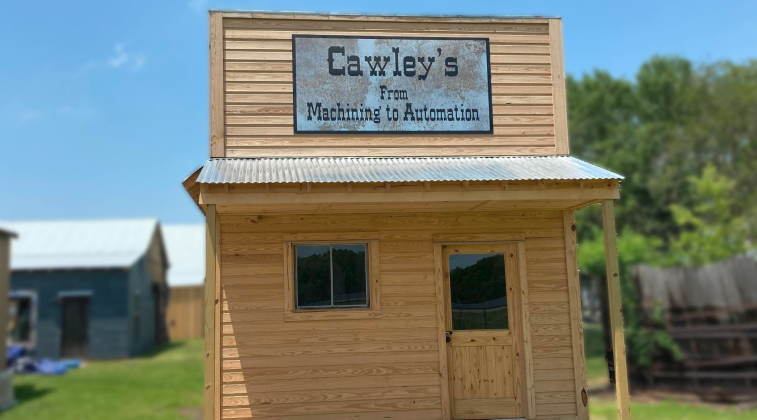For more than 40 years, Gladys City has given visitors a glimpse into life in the historic Spindletop oil field circa 1901, which is when the Lucas Gusher came in on Spindletop Hill, just south of Beaumont. The Spindletop-Gladys City Boomtown Museum allows patrons to view 15 buildings that recreate life on Spindletop Hill as well as Gladys City and will now get its first new exhibit in more than a decade – “Cawley’s from Machining to Automation.”
Beginning Saturday, June 11, at 10 a.m., guests can view four model steam engines created by the Cawley family as well as a model Gantry robot from Sage Automation at the museum located at 5550 Jimmy Simmons Blvd. near the campus of Lamar University in Beaumont.
“This is completely different that any of our other exhibits,” said Troy Gray, director of the museum. “This is more about steam technology, which was used in the oil fields and how much it has grown.”
A steam engine is a heat engine that performs mechanical work using steam as its working fluid. The steam engine uses the force produced by steam pressure to push a piston back and forth inside a cylinder. This pushing force can be transformed, by a connecting rod and crank, into rotational force for work.
Steam power became the energy source for many machines and vehicles, making it cheaper and easier to produce commodities in large amounts. This in turn increased the demand for raw materials used to build more machines that can produce even more commodities.
“My father was a master machinist,” said Gail Showalter, who is the daughter of Cliff Cawley. “We are bringing the four steam engines that he created. I want to show everyone, especially students, that if you keep working, things can evolve from something big to something exciting in the future.”
Showalter explained that her father worked in West Texas as a young man and worked for his father, who owned cotton gins, and that’s when he became fascinated with machinery.
In 1943, he became the fourth person hired at B.F. Goodrich. Cawley and his son Don, then opened a machine shop in Port Neches called C&D Machining. He continued the company, which later was named C&D Robotics and then was bought in 1990 by Steve Ingraham, under the current name Sage Automation, which is located at 4925 Fannett Rd. in Beaumont.
“This will be a tribute to three generations of engineering,” said Jason Blake, director of marketing and technology at Sage. “There was Cliff, Don and Don’s son Cliff, who has named after his grandfather. They were very interesting pioneers in Southeast Texas.
Blake explained that steam engines have been around since the Model T., but the oil and gas industry wasn’t benefitting from it until Don came around.
“Don was really a neat guy,” said Blake. “He was an amazing artist and a very technical-minded individual. His engineering approach was ‘less is more.’ If it was complicated, then it didn’t need to be there. Don had a simplified approach to solving a problem and you don’t see a lot of that in engineering and industrial design.
“He and Cliff built these replica steam engines from their interest in early automation in the 1900s. These models have stayed with the family and will now be on display for everyone to see.”
Don, along with a gentleman named James Moore, was also heavily involved with the design of the Gantry robot.
“Sage Engineers have pioneered the designs of four generations of Gantry robot and robot arm systems since the mid 1970s,” said Blake. “A Gantry robot is what we call an ‘automated storage and retrieval system.’ For instance, this Gantry robot can pick up tires, one at a time, and then stack them – so the idea would be to help feed an assembly line.”
According to Gray, patrons can also watch a video that explains the entire process and backstory of the Cawleys.
“We hope everyone comes out and enjoys this unique exhibit,” said Gray.





